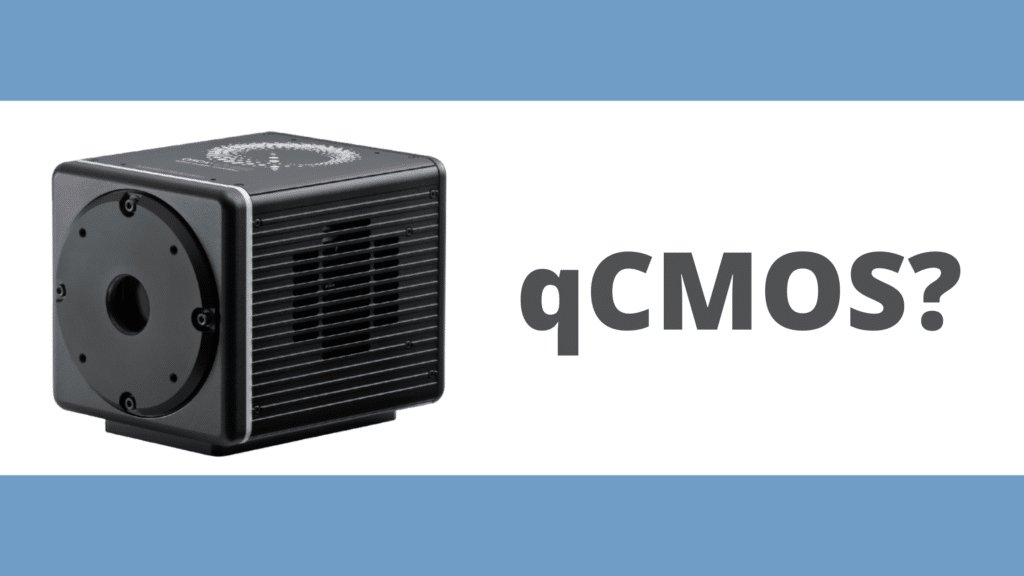In this post we will discuss the revolution in imaging detectors brought by the release of one of the first photon resolving cameras, the ORCA-Quest qCMOS from Hamamatsu!
Let’s start with the basics. A camera is a digital imaging device detecting and measuring photons, or to be more accurate, photoelectrons. But resolving exactly the number of photons reaching the detector, even though of great importance for quantitative imaging, has only been achieved with point detectors such as photomultiplier tubes (PMTs) or single-photon avalanche diodes (SPADs). Or so it was, until very recently…
Photon counting relies on the capability of a detector to indicate if none, or one or maybe two photons were detected. Assessing this requires having a well-designed sensor, with extremely low noise and very high sensitivity. So, let’s see what the limitations are and what a qCMOS camera overcomes to reach that goal.
The process of detecting photons on a camera requires several steps: propagating the photons through the semiconductor, generating an electron-hole pair, collecting those photoelectrons, transporting them to the electronic detection circuit, converting them into voltage signals and reading out those signals. All those steps are subject to technological or physics limitations, such as the Poissonian distribution of any light signal or the dark current associated with thermal noise. The last 40 years have witnessed gigantic technological improvements to overcome all those limitations, but the last frontier is the readout noise, created during the electronic photocharge detection.
Through careful sensor and camera design, qCMOS cameras have achieved a readout noise low enough to now discriminate single photons within each pixel. It can be calculated that resolving single photons can be achieved with an accuracy of 70% with a readout noise as low as 0.5 e- rms. If you want to reach 90% accuracy you then need a readout noise of 0.3 e- rms. Of course, while low readout noise is essential, it is not sufficient, and combining this with high QE, low dark current, sensor uniformity, and more is key to ensure accurate and reliable photon resolving measurements.
The graph below shows the probability distribution of measured photoelectrons for an average of 3 electrons, with different values of readout noise. The ability to count photons corresponds to the ability of resolving the peaks of this distribution. It is clear that with a readout noise higher than 0.5 e- rms it becomes very hard to accurately discriminate the exact number of photons reaching out one pixel.

The first qCMOS camera ever made is the ORCA-Quest from Hamamatsu. This camera features some extraordinary specs, such as 90% peak quantum efficiency, 0.006 e-/pixel/s dark current (when water cooled) and a readout noise of 0.27 e- rms (in ultra-quiet scan). This allows the ORCA-Quest to resolve single photons per pixel, up to a max of 200 photons! This is what is called true quantitative imaging and this is what defines a qCMOS!
It is impossible to predict all the possible fields of application for this new technology, but we expect the ORCA-Quest qCMOS camera to enable new discoveries in areas such as quantum photonics, astronomy, spectroscopy, live cell fluorescence imaging, bioluminescence and all the “omics”. Besides the specs mentioned above, the ORCA-Quest also shines when it comes to speed (120 fps full frame or 1132 MegaPixels/s), to sensor size (22mm field of view diameter) or to pixel size (4.6 µm so ideally matched to Nyquist requirements at 20x and 40x magnification, or higher magnification through binning).
Should you be interested in digging more into the qCMOS technology, you can watch the ORCA-Quest release webinar here, or read this qCMOS white paper from Hamamatsu here. And don’t hesitate to contact Axiom Optics if you want to discuss a project that could benefit from the ORCA-Quest first qCMOS camera!

